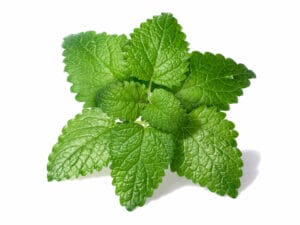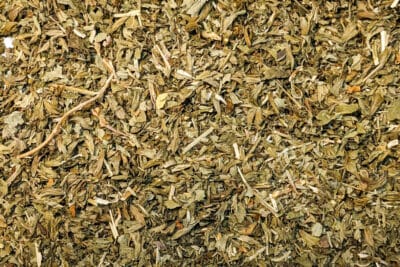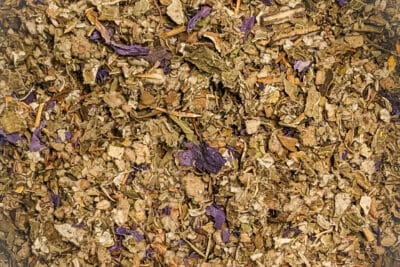Lemon Balm – The Flavorful Classic
Melissa officinalis
Also referred as:
Lemon Balm
🍃 Texture when dried
Green dried leaves
👅 Taste
Citrusy / Lemony taste and smell
❔ Usage
Herbal tea, smoking blend and fragrance
💨 Smoke
Low amount of smoke
🗜 Harshness
Moderate
⚡ Effects
Relaxation and calmness

Table of Contents
Introduction
Lemon balm, also known as Melissa officinalis, is a fragrant herb with a long history of use in traditional medicine. Known for its calming and soothing properties, lemon balm is often added to teas and enjoyed as a relaxing beverage. Its refreshing lemon scent and delicate flavor make it a delightful addition to any herbal collection.
Smokably products with Lemon Balm :
-
 Lemon BalmCAD $8.00 – CAD $12.00
Lemon BalmCAD $8.00 – CAD $12.00 -
 The Holy Blend ▸ Holy Basil, Blue Lotus, Red Raspberry, Mullein, Lemon BalmCAD $14.00 – CAD $20.00
The Holy Blend ▸ Holy Basil, Blue Lotus, Red Raspberry, Mullein, Lemon BalmCAD $14.00 – CAD $20.00
Frequently asked questions
Is it common to smoke Lemon Balm?
While smoking lemon balm herb is not as common as using it for tea, some people do choose to smoke it either by itself or in blend with other herbs. Often, lemon balm is incorporated as part of herbal smoking mixtures for its smooth, mild taste and calming properties. Remember, smoking any substance carries inherent risks, and it’s essential to be mindful of your individual health when considering such practices.
Is Lemon Balm smoked on its own or mixed with other herbs?
Lemon balm can be smoked on its own, but it is more commonly mixed with other herbs in herbal smoking blends. Combining lemon balm with other calming herbs like lavender, chamomile, or passionflower can enhance the overall aroma and experience. These herbal blends may be used as a tobacco alternative or to create enjoyable and unique flavors while benefiting from the soothing properties of the herbs. However, always use caution and consider potential health risks when smoking any substance, even herbal mixtures.
Can Lemon Balm help you quit smoking?
Lemon balm might be used as a component in herbal smoking blends designed to serve as tobacco alternatives for people trying to quit smoking. These blends may offer a milder experience and a nicotine-free herbal option to help with the transition. While lemon balm itself cannot directly help you quit smoking, using it in conjunction with other cessation strategies like nicotine replacement therapy, counseling, or support groups might contribute to a more successful quitting journey. It’s essential to consult a healthcare professional for personalized advice on quitting smoking.
Why do people enjoy Lemon Balm ?
People enjoy Lemon Balm for a variety of reasons.
- Pleasant aroma: Lemon balm has a refreshing lemon scent that many find appealing. – Calming properties: It is known for its soothing and relaxing effects, making it a popular choice for stress relief.
- Culinary versatility: Lemon balm can be used in teas, as a garnish, or in cooking for its delicate flavor.
- Herbal synergy: It often complements other calming herbs well when used in blends, such as teas or smoking mixtures.
- Tradition: Lemon balm has a long history of use in traditional medicine, adding to its appeal for those interested in herbalism.
- Easy to grow: As a hardy perennial, lemon balm is simple to cultivate in many climates, making it accessible for those interested in growing their own herbs.
NB. Anecdotal or historical claims should not be construed as health claims. Always consult a health specialist prior to oral consumption of any herb. Consumption of any herbs might have side effects.
How do you make a tea out of Lemon Balm ?
To make a herbal tea out of Lemon Balm, you can follow these simple steps:
- Gather fresh or dried lemon balm leaves. Using fresh leaves generally provides a more vibrant flavor.
- Rinse the fresh leaves or measure out the dried leaves. Use about 1-2 tablespoons of fresh leaves or 1 tablespoon of dried leaves per 8 ounces (240 ml) of water.
- Boil the water and pour it over the lemon balm leaves in a heat-resistant container, such as a teapot or mug.
- Steep the lemon balm tea for 5-10 minutes. The longer you steep, the stronger the flavor will be.
- Strain the tea to remove the leaves, and your lemon balm tea is now ready to enjoy. You can add sweeteners like honey, stevia, or agave syrup to taste, if desired.
Lemon balm tea has a delicate, lemony flavor with a hint of mint. It is popular among herbal tea enthusiasts due to its pleasant taste and calming properties. Drinking lemon balm tea is a more common form of consumption compared to smoking this herb. Enjoying it as tea allows consumers to reap its soothing benefits while savoring a warm, comforting beverage.
What does Lemon Balm look like?
Lemon balm (Melissa officinalis) is an attractive, perennial herb with a bushy growth habit. The plant typically grows up to 2-3 feet (60-90 cm) in height and spreads 18-24 inches (45-60 cm) wide. Its leaves are green, oval-shaped, and slightly serrated along the edges, resembling mint leaves, which makes sense since both belong to the Lamiaceae (mint) family.
The lemon balm plant produces small, tubular flowers in the summer, which are usually pale yellow, white, or light purple. These delicate flowers attract pollinators like bees and butterflies to the garden. The plant has a delightful lemon scent when you crush the leaves, which is one of its most appealing characteristics.
How has Lemon Balm been used historically?
Historically, lemon balm has been used for various purposes in different cultures due to its soothing and aromatic properties. Here are some notable uses of lemon balm throughout history:
- Ancient Greeks and Romans: They planted lemon balm in their gardens to attract bees for honey production and utilized the herb for its medicinal properties, such as alleviating insect bites and stings.
- Arabic medicine: In medieval times, Arab physicians recognized lemon balm for its calming effects and used it to help with nervous disorders and sleep issues.
- European herbal traditions: Lemon balm was widely employed as a general health tonic in early European herbal medicine practices. Renowned physicians like Paracelsus and Nicholas Culpeper recommended it for addressing anxiety, melancholia, and heart problems.
- Culinary uses: Throughout history, lemon balm has been used as a flavoring agent in recipes, wines, and liqueurs. In the 17th century, Carmelite water, a lemon balm-infused spirit was popular for its medicinal and invigorating qualities.
- Victorian era: People in this era used lemon balm for cosmetic and personal care products such as potpourris, sachets, and fragrances.
Though these historical uses reflect lemon balm’s traditional applications, it’s essential to understand that modern scientific research is still exploring its potential benefits and limitations. Always consult a healthcare professional before using lemon balm or any herb to address specific health concerns.



